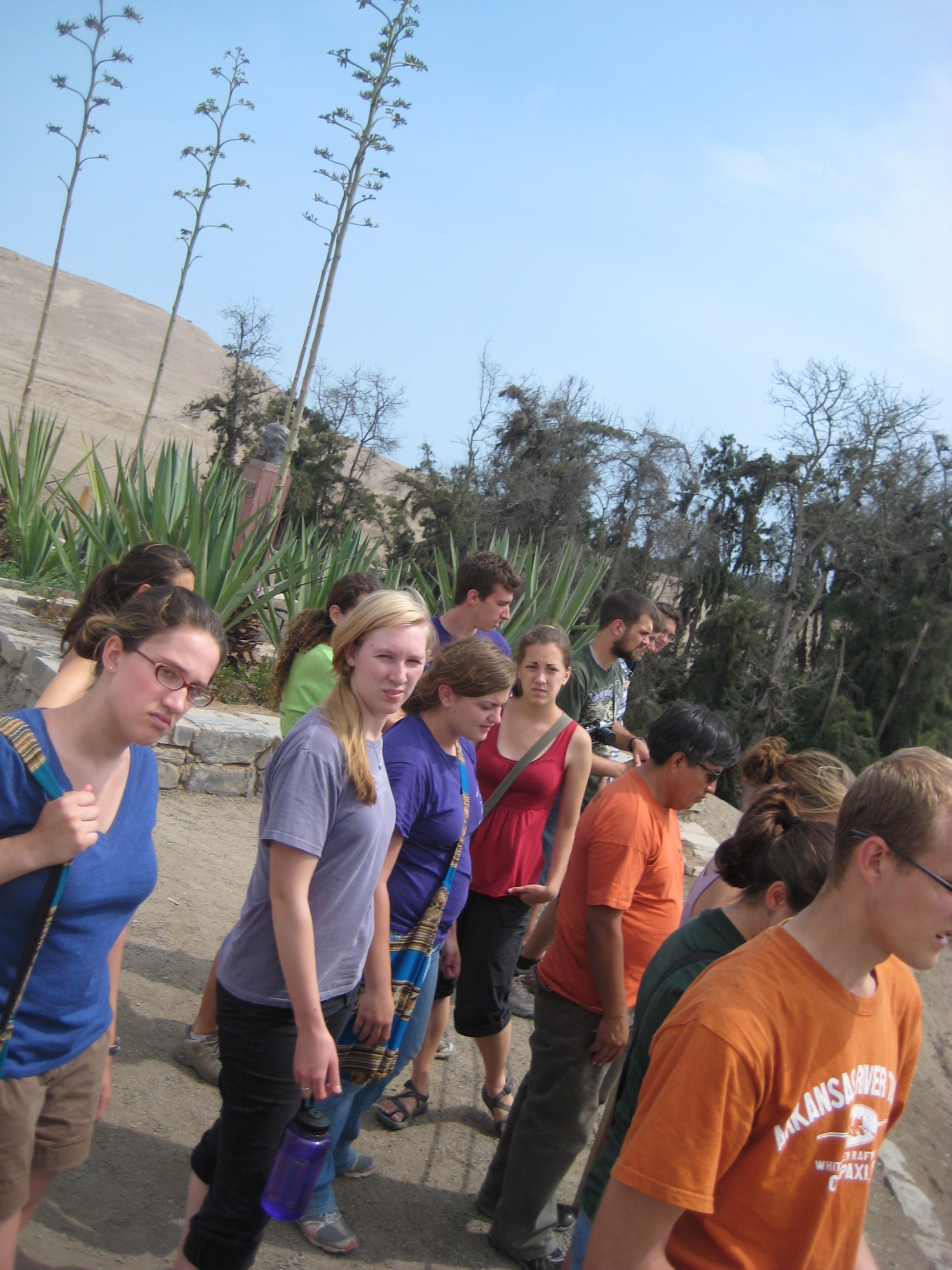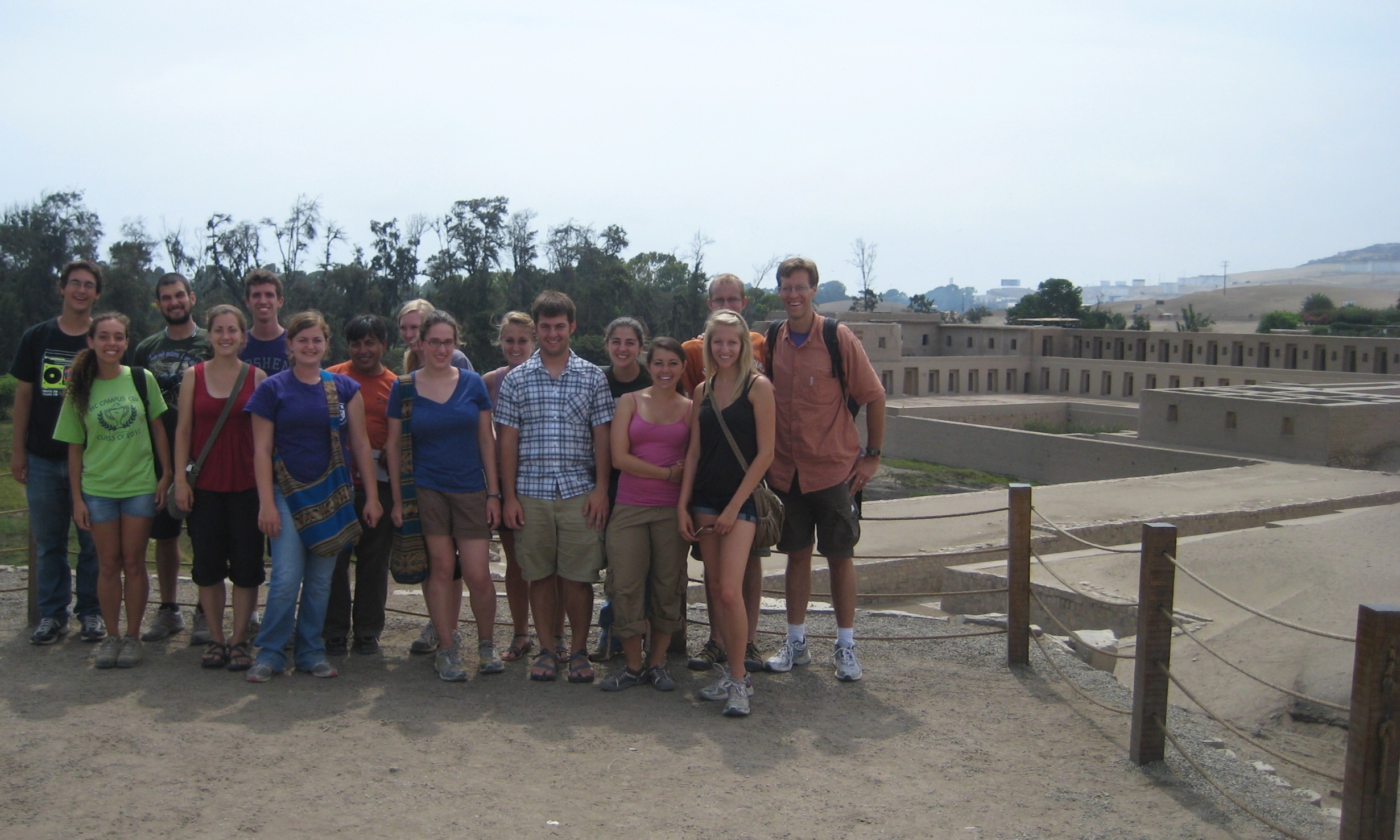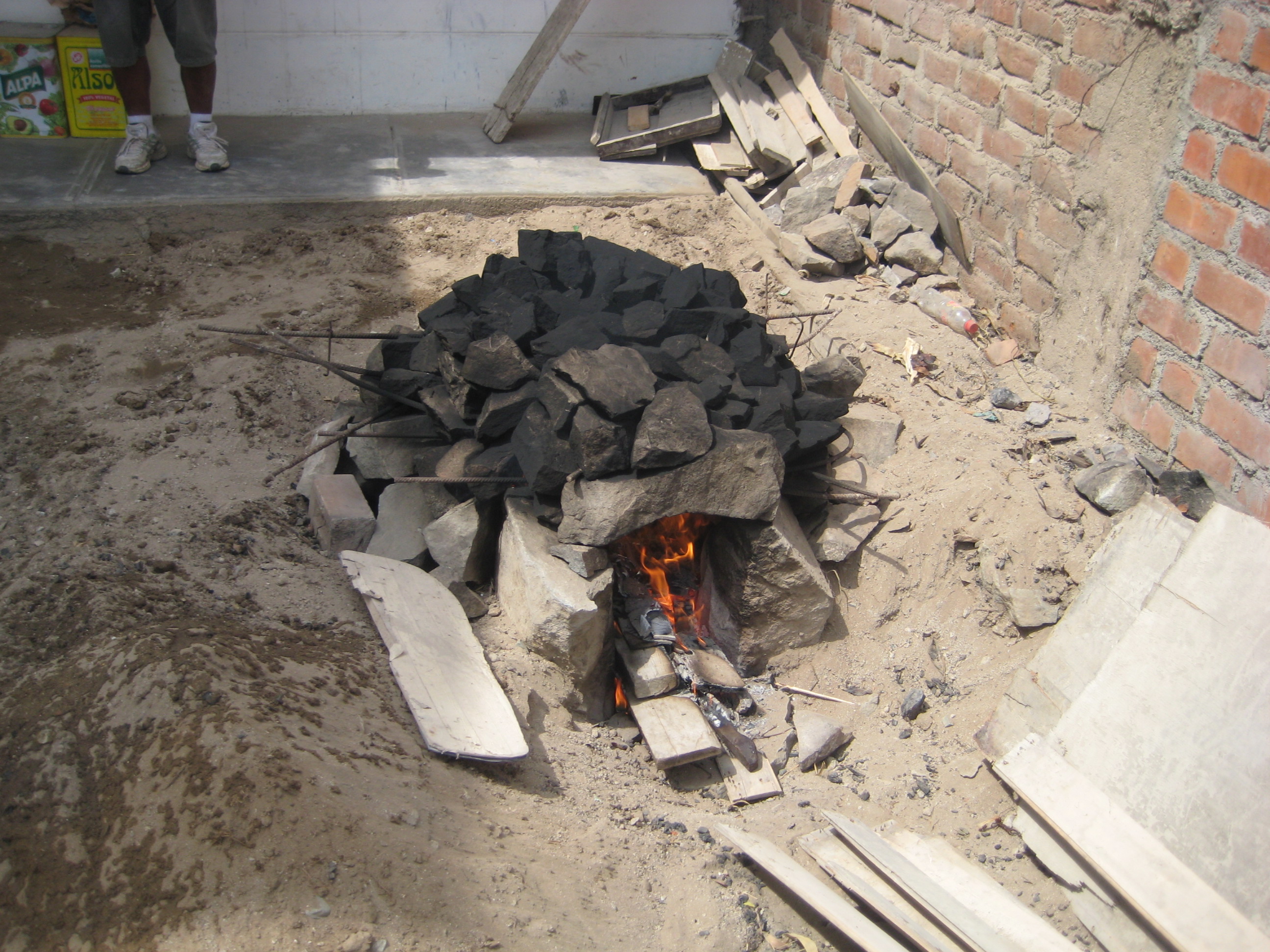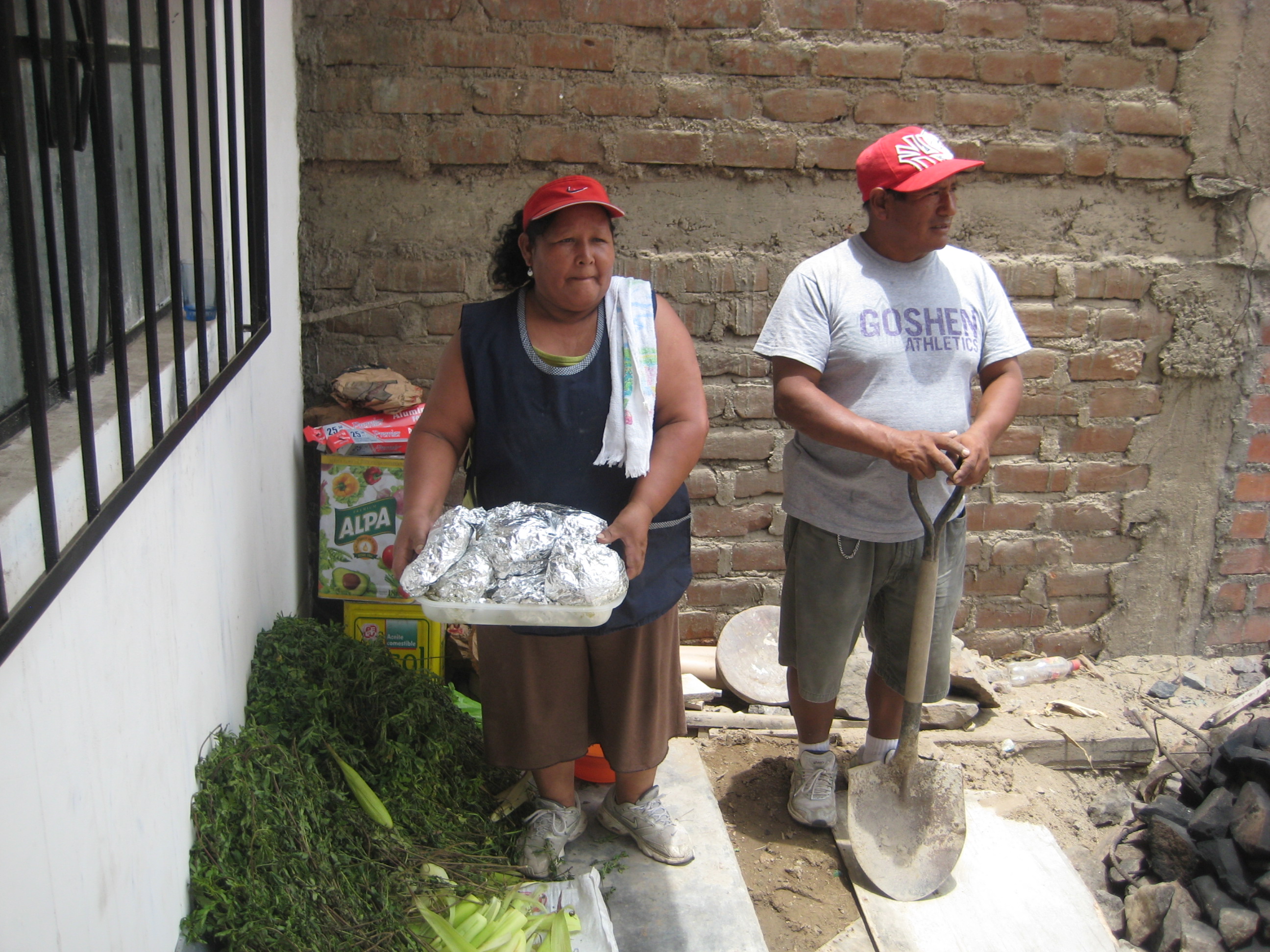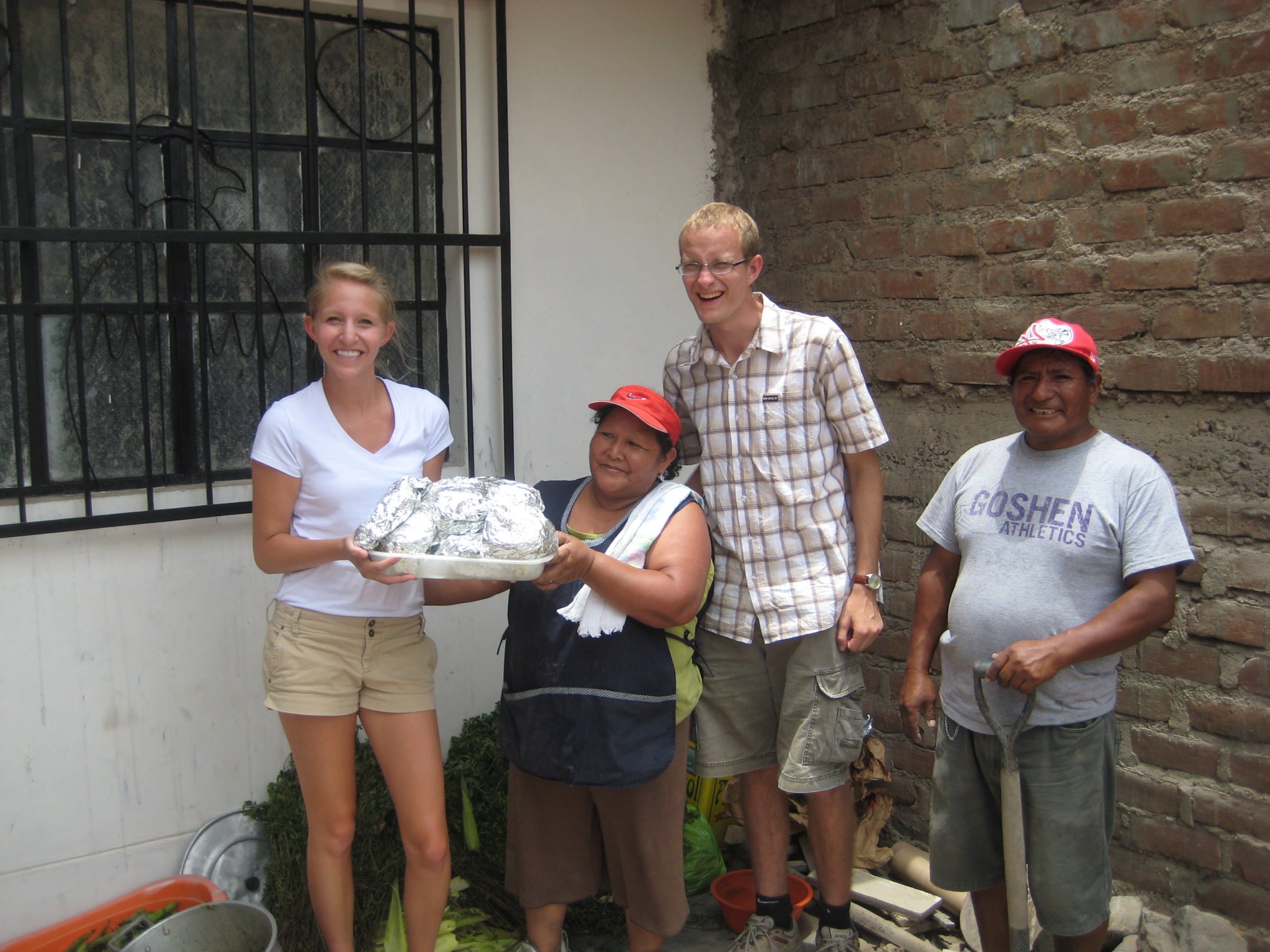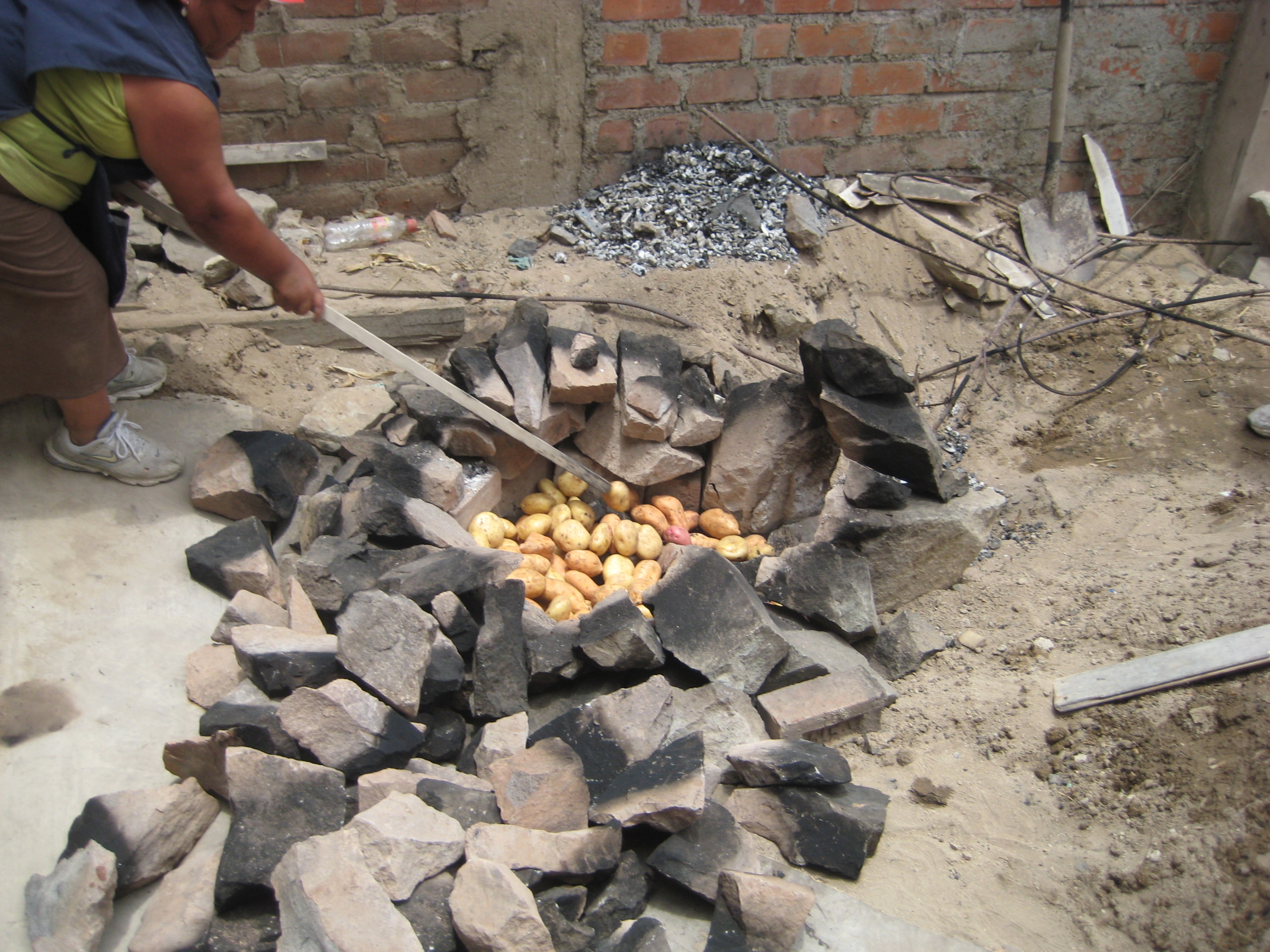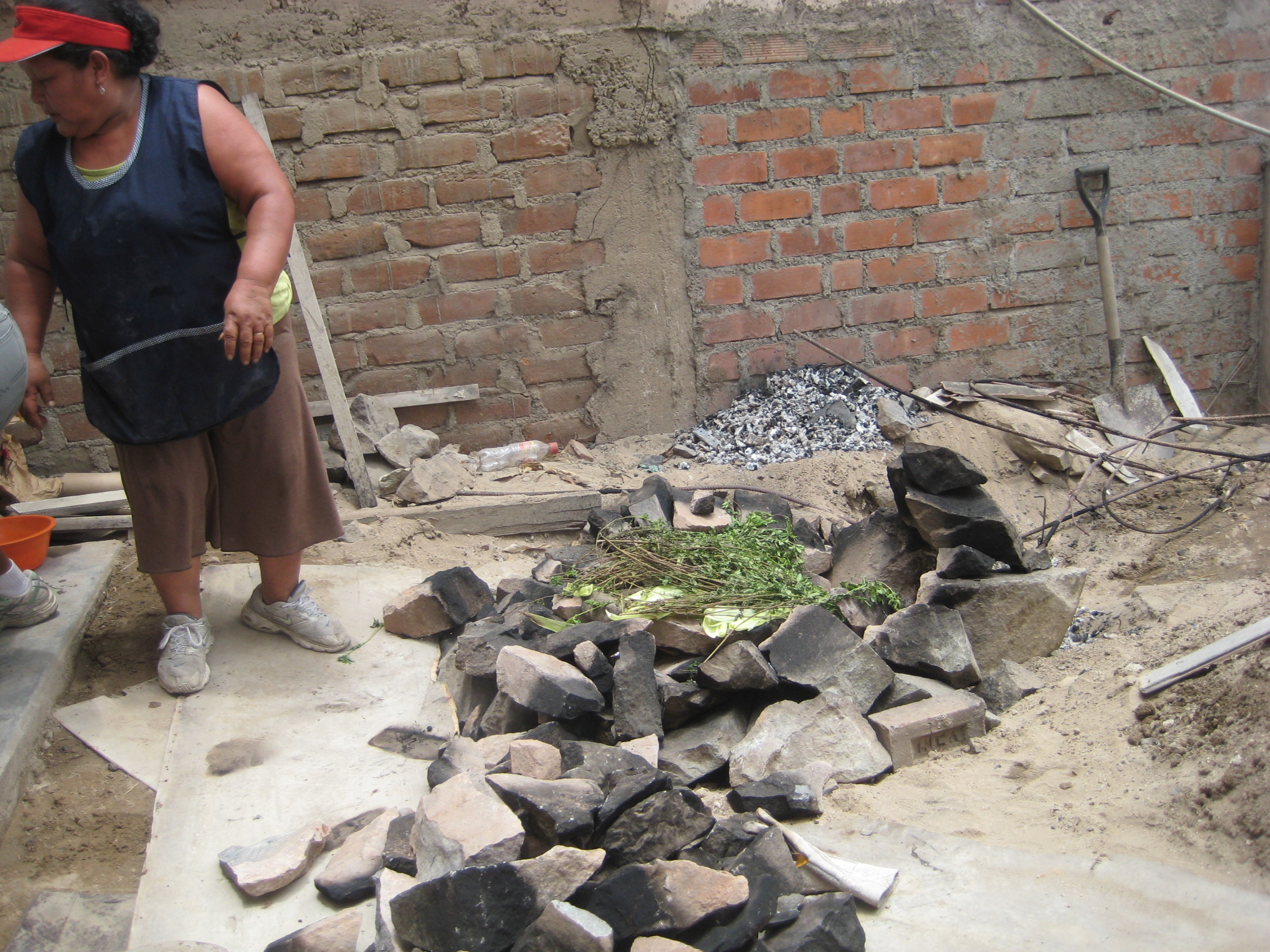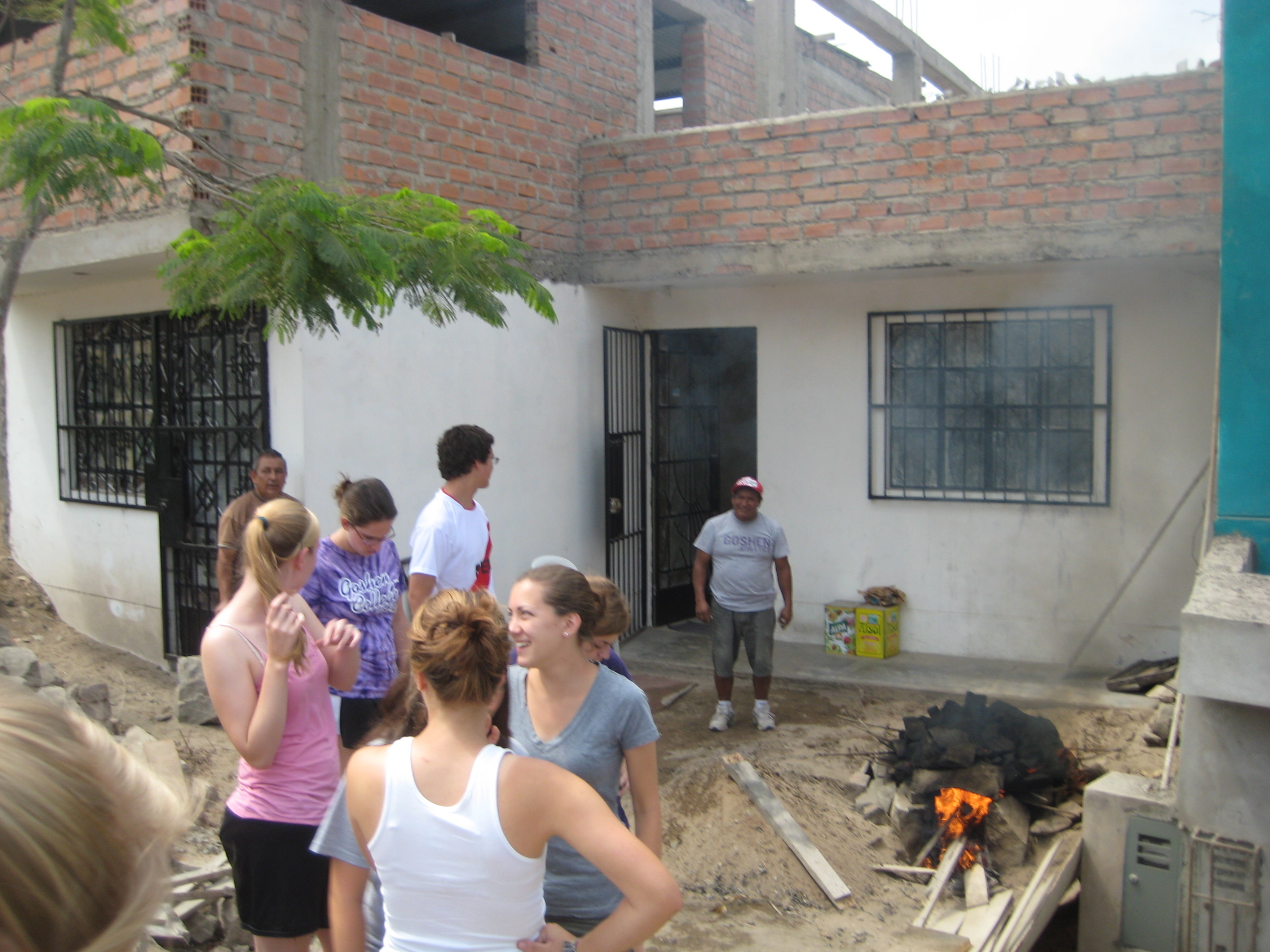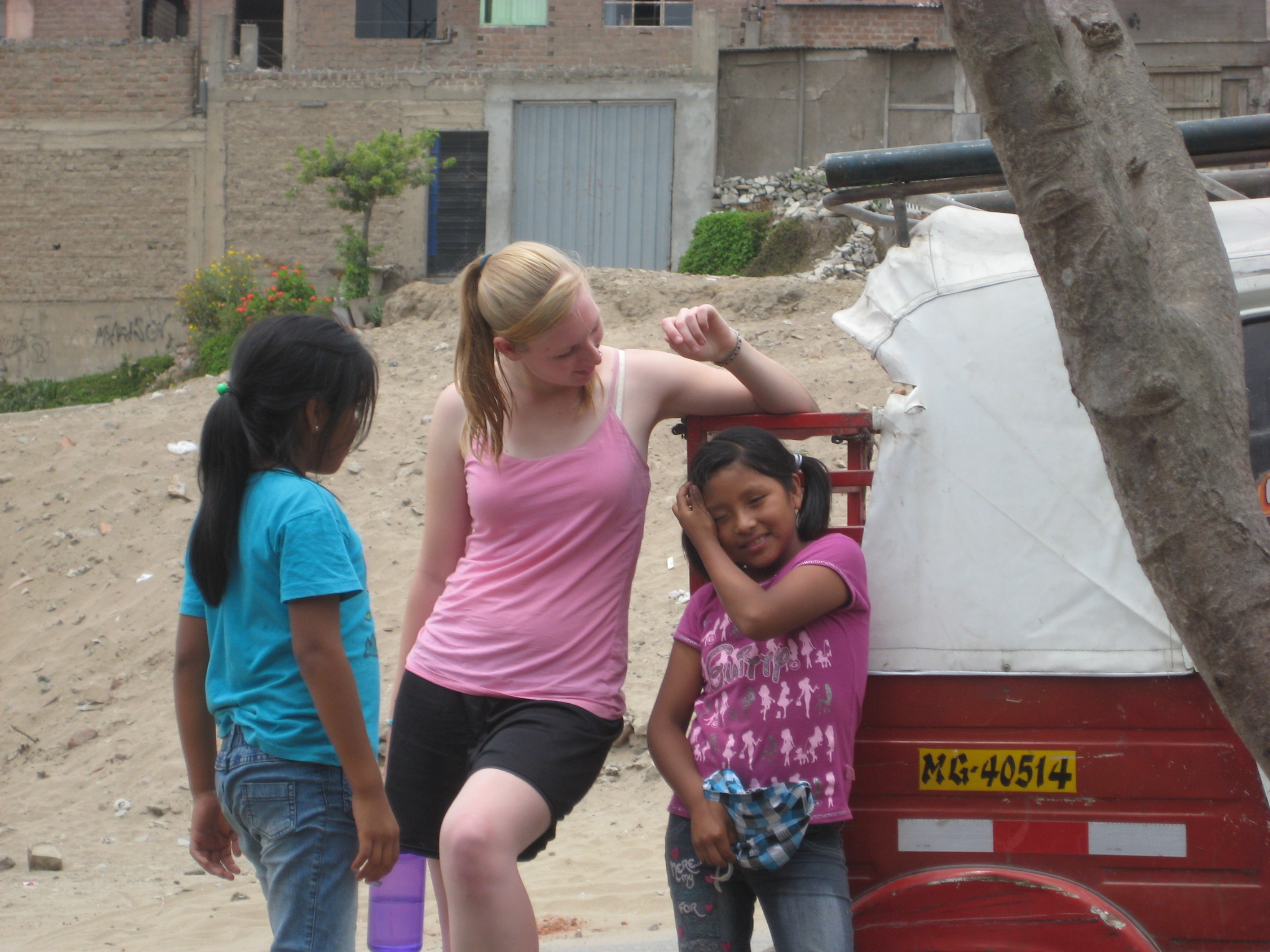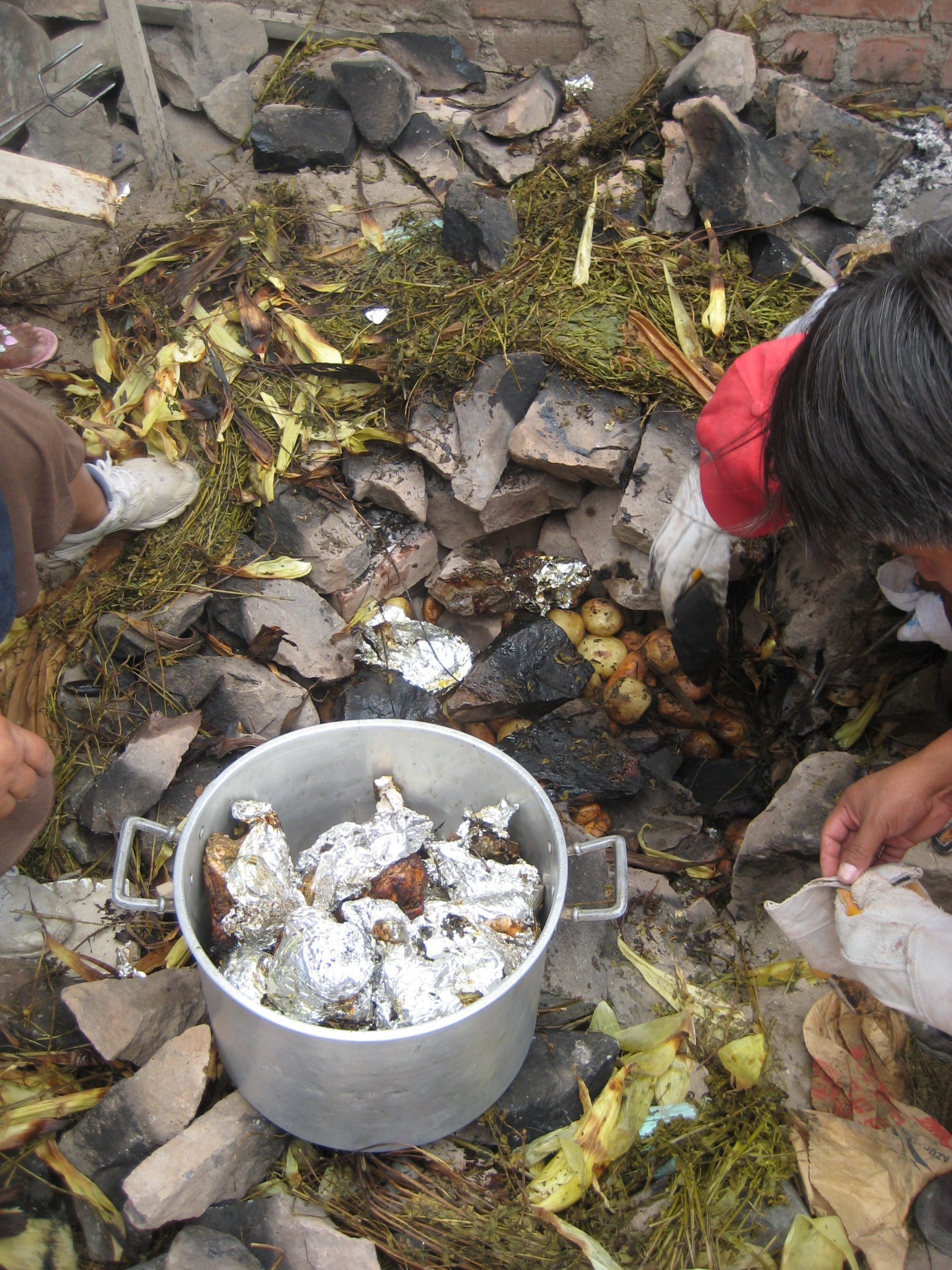Indigenous People, Places, and Food
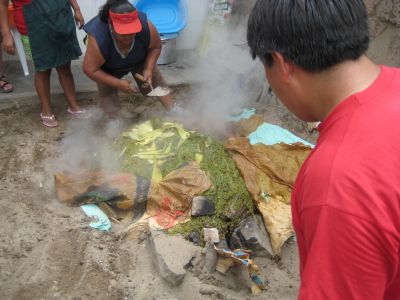
Our week began with two lectures focusing on the indigenous peoples of Peru. First we heard from Mennonite Pastor Jose Manuel Prada Bernal on how the oppression of indigenous peoples continues to this day, as many have been forced off of their land to make way for commercial enterprises such as logging, mineral acquisition, and oil excavation. Next we heard from Catholic priest and professor of indigenous studies Jaimie Regan about the lives of indigenous peoples in the Amazonas region, and how their environment affects their daily life.
On Thursday, we continued our study of native cultures by visiting the nearby huaca (sacred place) Pachacamac, a museum and huge archaeological site just south of Lima that dates as far back as 200 A.D. and remained in use (by various groups for various purposes, but most often as a religious center) for more than a millennium.
Finally, we enjoyed a traditional Andean feast: pachamanca, which means “earth oven” in Quechua. Our friend Alicia directed the cooking crew and served up a tasty meal of chicken, potatoes, tamales, beans, and sweet potatoes, all cooked underground in a pit full of heated rocks. It’s a special meal that we were glad to share right before the SSTers last week in Lima.



